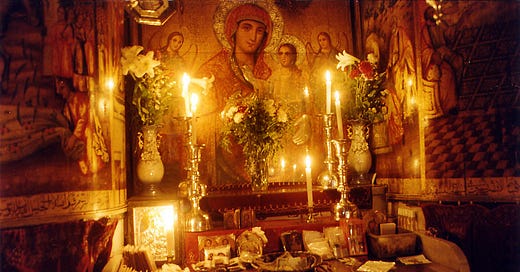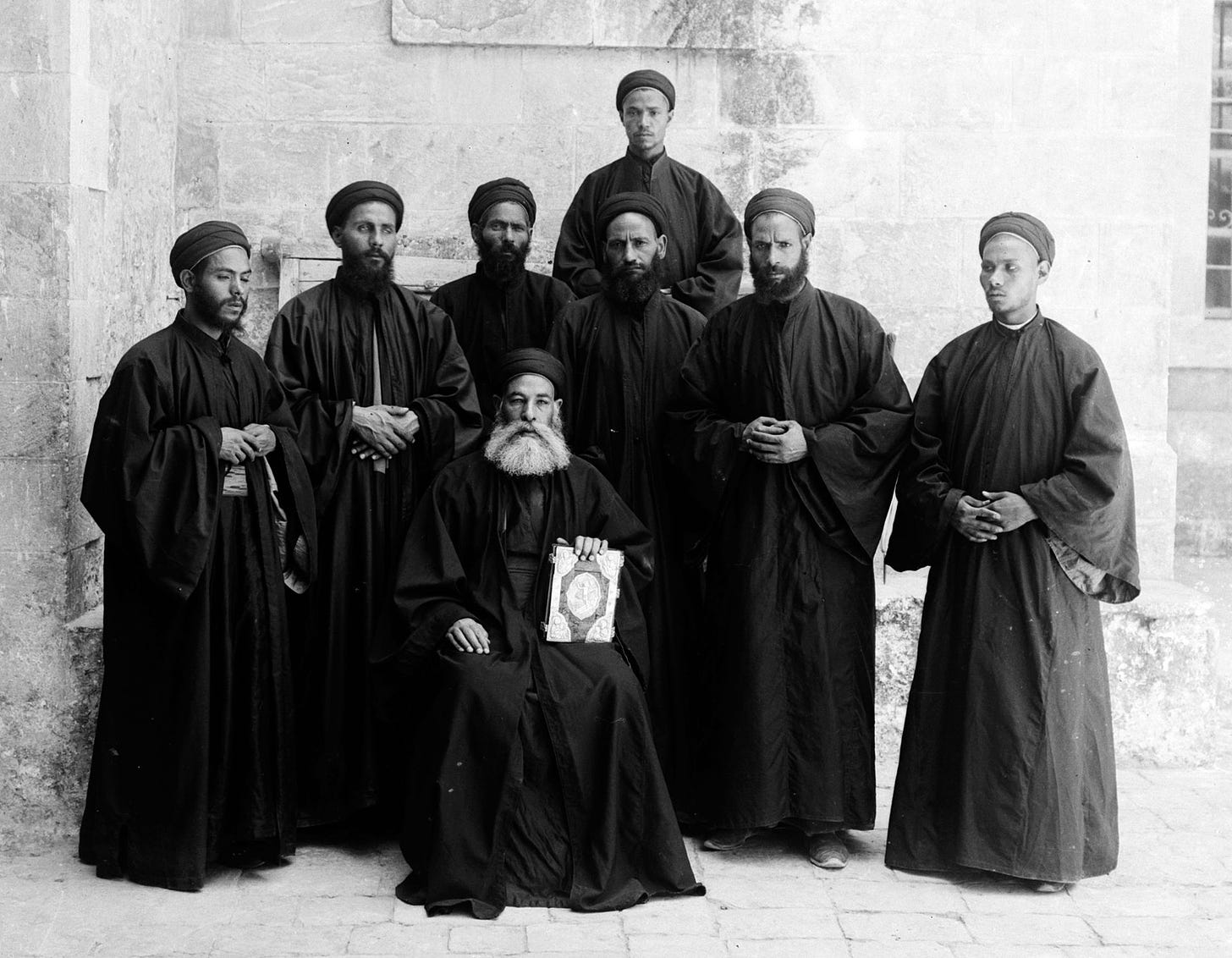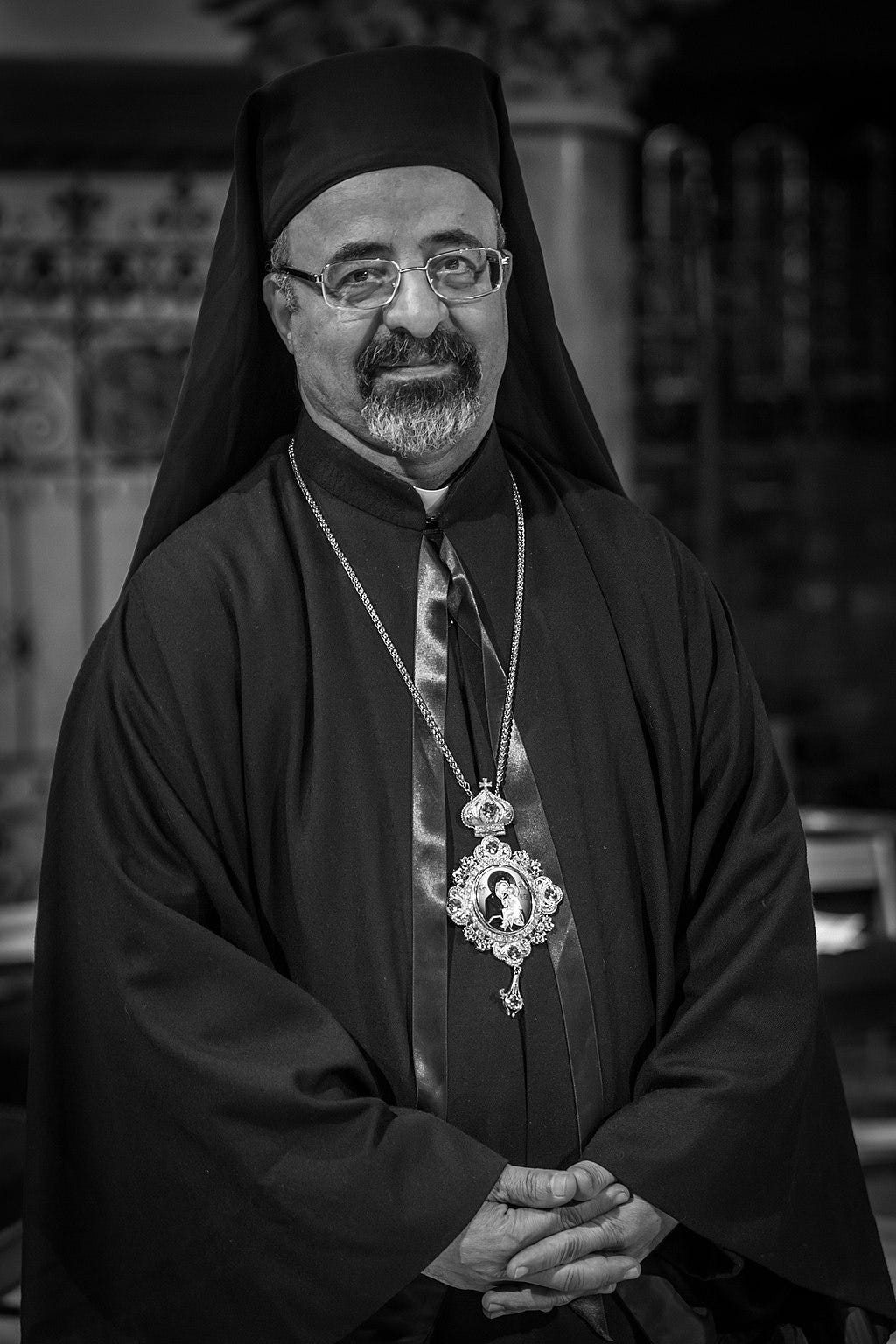
Talking to the Copts: With dialogue off, who are Coptic Christians anyway?
After 'Fiducia' controversy, Egyptian Orthodox cut off a long-standing dialogue with Rome.
The Coptic Orthodox Church announced this month that it has suspended dialogue with the Catholic Church because of Pope Francis’ Fiducia supplicans — which Coptic leaders have taken as a Catholic “change of position” on homosexuality.
In a March 7 statement, the Coptic Orthodox synod of bishops announced that they had decreed to “suspend the theological dialogue with the Catholic Church, reevaluate the results achieved by the dialogue from its beginning 20 years ago, and establish new standards and mechanisms for the dialogue to proceed in the future.”
“The Coptic Orthodox Church affirms its firm position of rejecting all forms of homosexual relationships, because they violate the Holy Bible and the law by which God created man as male and female, and the Church considers any blessing of such relations, whatever its type, to be a blessing for sin, and this is unacceptable,” the bishops said.
The Coptic decision has garnered attention among Catholics, some of whom have said it suggests that the December motu proprio Fiducia supplicans was ill-advised.
But what is the Coptic Orthodox Church? Has its ecumenical dialogue with Catholics actually achieved anything?
The Pillar explains.
What’s the Coptic Orthodox Church?
The Coptic Orthodox Church is an Orthodox Church, present mostly in North Africa, and in regions of the world where north Africans have migrated.
The Church, which has valid apostolic succession and sacraments, has at least 10 million members, and possibly double that many, led by more than 100 bishops.
How did it start?
According to early Christian traditions, St. Mark the Evangelist was a traveling companion of both St. Barnabas and St. Peter. He is regarded as the author of the Gospel of Mark, thought to be composed largely by recording Peter’s recollections and kerygmatic preaching.
After his missionary journeys, tradition holds that St. Mark traveled to Alexandria, Egypt — then one of the biggest and most important cities in the world. Mark became the bishop of the growing Christian community there, and is recorded in Christian history and liturgy as a martyr — though details of his martyrdom are unclear.
In the decades after, Christianity spread across Egypt and the Nile River valley, with Coptic, the Egyptian language, as the primary liturgical language, and a unique liturgical rite emerging from the region.
While Egyptian Christians did face persecution in their earliest decades, it intensified at the beginning of the third century, under the orders of Rome’s emperors.
In the early part of the fourth century, hundreds of thousands of Christians were martyred in Egypt, as the empire tried to stamp Christianity from the region. In fact, today the Coptic Church begins its calendar from a particular egregious year of persecution in Egypt, 248 AD. The Coptic calendar uses the demarcation A.M. — Anno Martyrii, rather than A.D., Anno Domini.
In the same early centuries, the see, or diocese, of Alexandria became known as an important center of Catholic thought, life, and spirituality.
Across the Christian world, a Christological controversy emerged in the 440s over the teaching of a monk named Eutyches, whose Christology seemed to many to deny the humanity of Jesus Christ, suggesting that Lord’s humanity was subsumed by or absorbed by his divinity.
(Editor’s note: Historical theologians, The Pillar is aware that the thickets of Christology are fraught with the possibility of error. We are aiming to present simply a deeply complex reality, and appreciate your forbearance.)
The Eutychian controversy was part of a theological movement eventually called monophysitism, in which several schools of theology taught — in varying ways — that Christ had only one nature, his divine nature.
Controversy over monophysitism led eventually to the Council of Chalcedon in 451, which was attended by more than 500 bishops from across the Church.
The council condemned monophysitism, confirming that Jesus Christ possessed both human and divine natures, united in one person.
But the council was also influenced and plagued by politics, and sometimes by misunderstandings about the positions of various Church leaders.
The bishops of Egypt say they were misunderstood by the bishops from Constantinople and Rome at the council, with their Christology unfairly lumped in with that of Eutyches. They saw their Christology — called miaphysitism — as different, because it held that Christ has a united divine-human nature, and not a singular divine nature.
Nevertheless, the Egyptian bishops were lumped in at the Chalcedon council with other bishops believed to be monophysite, leading to a rift in the Church’s communion.
And indeed, the Patriarch of Alexandria, Dioscorus, refused to accept the Christological decrees of the council, arguing that while Eutyches should be condemned, Chalcedon’s language could lead to other theological heresies.
The history from there is complicated, unfolding over centuries. But the rift in communion which began at Chalcedon calcified in the centuries to come, such that a group of Orthodox churches in India, Syria, Egypt, Ethiopia, and Armenia became institutionally distinct from Christian communion in the East, centered around Constantinople, and in the West, centered around Rome.
(Editor’s note: Armenia’s ecclesiastical history is actually more complicated than that, but that’s probably an entirely different explainer.)
Eventually, that group of Churches became known as the Oriental Orthodox Churches — with the Coptic Orthodox Church among the most prominent.
The seven Oriental Orthodox Churches are in a kind of ecclesial communion with each other, but not with the Eastern Orthodox Churches or with the Catholic communion. The largest of the Oriental Orthodox Churches is the Ethiopian Orthodox Church, which has between 40 and 50 million members.
What is Coptic liturgy like?
Good question. Coptic liturgy is pretty cool, if you want The Pillar’s view on the subject.
Coptic Orthodox Christians offer liturgy according to the Coptic, or Alexandrian, Rite, which developed in and around Alexandria in the early centuries of the Church, and has developed to follow three different liturgical missals at different times of the year.
Liturgies are celebrated in Coptic, Arabic, English, and in other languages of the Egyptian Coptic diaspora.
Here’s a Coptic liturgy which takes place partially in English:
Are there Coptic Catholics?
Yes, the Coptic Catholic Church is a sui iuris Eastern Catholic Church with some 200,000 members, headquartered in Cairo.
The Church’s modern history begins with the 1741 Catholic conversion of Coptic Bishop Anba Athanasius, who was soon after appointed apostolic vicar of a very small community of Egyptian Catholics who observed Coptic liturgical customs.
While Anba Athanasius eventually returned to Orthodoxy, the Vatican continued to appoint apostolic vicars for Egyptian Catholics using Coptic liturgies.
In 1895, Pope Leo XIII gave those Coptic Catholics a more formal status, by appointing Bishop Cyril Makarios as Patriarch of Alexandria of the Copts, confirming the status of a sui iuris Eastern Catholic jurisdiction. Soon after, Cyril held a synod of other Coptic Catholic bishops, cementing the governing structure of the emerging sui iuris Church.
Today, Coptic Catholics have parishes in Italy, France, Canada, the United States, Australia, Kuwait, and, of course, Egypt.
The current head of the Coptic Catholic Church is Patriarch Ibrahim Isaac Sidrak.
Does it matter that the Coptic Orthodox have suspended dialogue with Catholics?
That’s for you to decide, of course.
But in recent decades, the Coptic Orthodox Church and the Catholic Church have had a lengthy and productive conversation on Christology.
In 1972, Pope St. Paul VI and Coptic Pope Shenouda III of Alexandria made a joint declaration that:
“We confess that our Lord and God and Saviour and King of us all, Jesus Christ, is perfect God with respect to His Divinity, perfect man with respect to His humanity. In Him His divinity is united with His humanity in a real, perfect union without mingling, without commixtion, without confusion, without alteration, without division, without separation. His divinity did not separate from His humanity for an instant, not for the twinkling of an eye. He who is God eternal and invisible became visible in the flesh, and took upon Himself the form of a servant. In Him are preserved all the properties of the divinity and all the properties of the humanity, together in a real, perfect, indivisible and inseparable union.”
After that declaration, an official theological dialogue was set up, and in 1988, a mixed commission issued another statement on Christology:
“We believe that our Lord, God and Saviour Jesus Christ, the Incarnate-Logos, is perfect in His Divinity and perfect in His Humanity. He made His Humanity one with His Divinity without mixture nor mingling, nor confusion. His Divinity was not separated from His Humanity even for a moment or twinkling of an eye. At the same time, we anathematize the doctrines of both Nestorius and Eutyches.”
Considering that the Coptic Orthodox say their Christology was misunderstood at Chalcedon, finding ways to express a common theology of Christ with Catholics has been regarded by many ecumenists as a big deal. And while many other issues would need to be resolved before actual ecclesial communion between Rome and Alexandria, agreement about Jesus is widely seen as a big first step.
What will happen now?
In 2003, a joint committee between the Catholic Church and Oriental Orthodox Churches together was established, with the first meeting in Cairo. Almost 20 official meetings have taken place since, with conversation focusing on sacraments.
The March 7 Coptic Orthodox statement effectively pauses Coptic participation in that group. For now, many ecumenical experts will look to Ethiopia for the next step. If Ethiopian Orthodox also suspend their participation, most experts will look at the dialogue as effectively dead. But for now, it is not clear when the Ethiopian Orthodox bishops might take up the question.
In January, Pope Francis told the Joint International Commission for Theological Dialogue Between the Catholic Church and the Oriental Orthodox Churches that they should take up a three-fold conversation.
“The dialogue of charity, the dialogue of truth and the dialogue of life: three inseparable ways to advance on the ecumenical journey that your commission has encouraged over these past 20 years,” the pope told the committee.













I’d say that yes, it isn’t just a big deal but the very biggest of deals that the vicar of Christ did something that caused the Body to be further torn. The responsibility for this lies irrefutably with the one whose signature is born on the page and the exercise of those he chose to elevate.
I'd say an end to what has been a productive dialogue, due to this pope's ambiguity and unnecessary actions, is pretty bad.